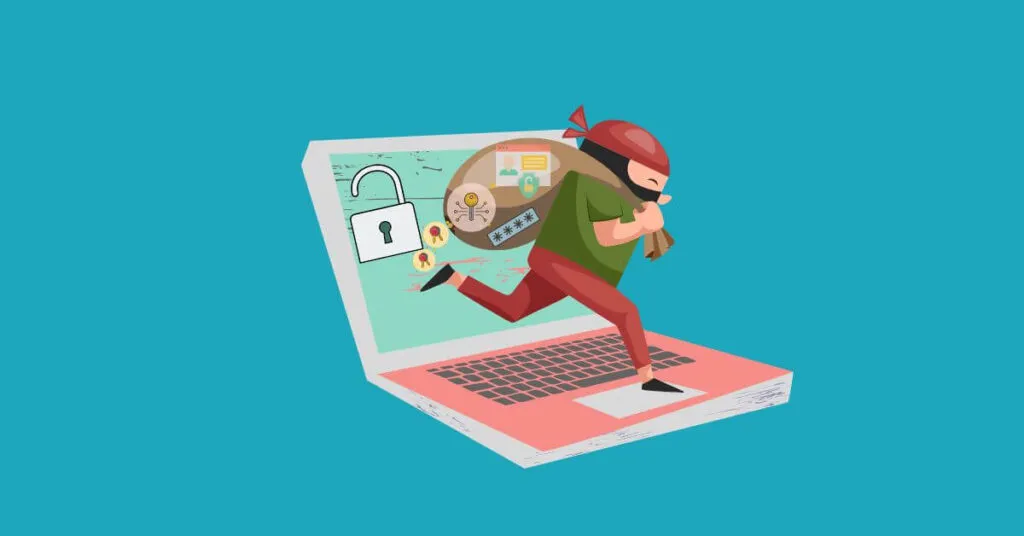Top 8 Vulnerable Risks in Cyber Security – In the last decade we have seen a tremendous increase in internet usage around the world and more and more businesses are being run online. This significant increase in both personal and business use of the internet means that today’s digital world is much more complex.
There is more money invested in large online companies and as a result, security risks are more varied and sophisticated. When we take a look at the world of cyber criminals, the numbers show a steady increase in successful attacks, breaches and hacks.
Table of Contents
8 Vulnerable Risks in Cyber Security
Many experts see that the war between system security experts versus ever changing types of cyber attacks will continue and it will engage many professionals in the following years. IT departments and security professionals will continue to be at the forefront of the fight against cyberattacks and their roles will become even more important in today’s digitalized era. The following is a list of cyber security risks that must be considered when designing reliable and secure computer systems:
Social Engineering
Social engineering is considered a major risk because many social media websites are newly popular and diverse. With the rise of Facebook, twitter, Linkedin and many other platforms, hackers have almost endless attack routes to choose from.
Social networks connect people, but through a series of friends and like-minded acquaintances, plus highly convincing profiles and unexpected friend requests, they can become the best ground for future hackers. These fledgling social hackers can grow uncontrollably and with the help of poor security systems they can bring down a great business.
HTML Security
The recent implementation of the HTML 5 protocol means that there is a high risk of a security breach in the system.
This new protocol allows the connection of technologies that might otherwise not work securely together, allowing hackers to carry out destructive work unnoticed.
Although HTML 5 has improved over the last two years, it is still a relatively new protocol, and many developers still make mistakes, so cyberattacks are still on the rise.
Cloud Computing Services
A new technological trend in computer systems is cloud computing. More companies than ever before are using these efficient computing systems and the amount of information hosted on these cloud systems is staggering. Obviously, these systems are some of the more attractive targets for modern-day hackers, as even minor breaches of security can have quite significant adverse effects. In order to avoid such problems, businesses using these systems should continuously discuss and demand the best security system from their respective cloud service providers.
Malware
Malware has long been a powerful tool used by many skilled hackers. But a new danger comes from precision-targeted malware, a special type of malware attack that is evolving.
Increasingly improved malware techniques, so that targets are better defined and they are designed to attack specific computer configurations and components .
Vulnerable systems are social media platforms, including individual accounts and groups, mobile devices, and remote servers .
Internal Risk Factors
Many security experts and professionals know that some of the most dangerous cyber attacks come from within. This attack has devastating effects, especially because privileged users know which data to use or destroy. A recent study conducted by the CERT Insider Threat Center of the Carnegie University Software Engineering Institute and supported by the United States Secret Service has shown that malicious insiders are detected only after 32 months.
The most vulnerable areas are financial institutions, such as banks and stock exchanges. Unfortunately, the only way to protect companies from this threat is to carefully assess their own workforce, which is a notoriously difficult task.
APTs
Advanced Persistent Threats (APTs for short) are referred to as attacks against businesses or organizations that try to steal and leak information silently and unnoticed. Usually, with the help of social engineering, they slowly break through the walls of the organization and gain access to the internal network.
Good APT attacks target servers and can be very difficult to detect, especially since they act slowly and during uptime are at low levels. Generally, APTs can be detected when abnormal traffic changes are observed in the system, but their digits are barely visible. Attacks are focused on large files of common information, such as Microsoft Word or PDF files.
Likewise, other vectors may be vulnerable, such as embedded systems and mobile devices that are increasingly being used in work environments. This is why smaller, least-used digital devices must be carefully secured (such as tablets, smartphones, and mobile hard disk drives).
Botnets
Botnets , like other cyberweapons, are increasingly specifically targeted to commit crimes and are increasingly dangerous.
Cybercriminals know that these tools are their best asset and will continue to invest significant amounts of time, technology, and funds into them. They are becoming more widely available across multiple platforms and easily distributed on almost every system.
The takedowns launched by larger companies, such as Microsoft or Adobe, only work temporarily, and it’s only a matter of time before cybercriminals improve their spam and malware tools.
BYOD
BYOD or what is called bring your own device is a phenomenon that is present today and is becoming increasingly difficult to control in the workplace. Work environments have a plethora of new devices that can be connected to the internet so an office filled with Android devices, iPhones, iPods and various tablets and other gadgets can act as a gateway for skilled hackers.
Users of these devices generally do not fully understand the risks that can occur and also the exposure of the office environment. These new devices have various applications installed on them, some with poor security settings, which can bring additional harm to the software unknowingly.
For example, every modern smartphone has an integrated high-definition camera, voice recorder, sensitive microphone and other unexpected recording applications. Advanced hackers will find this gimmick the ideal window into a security system.


